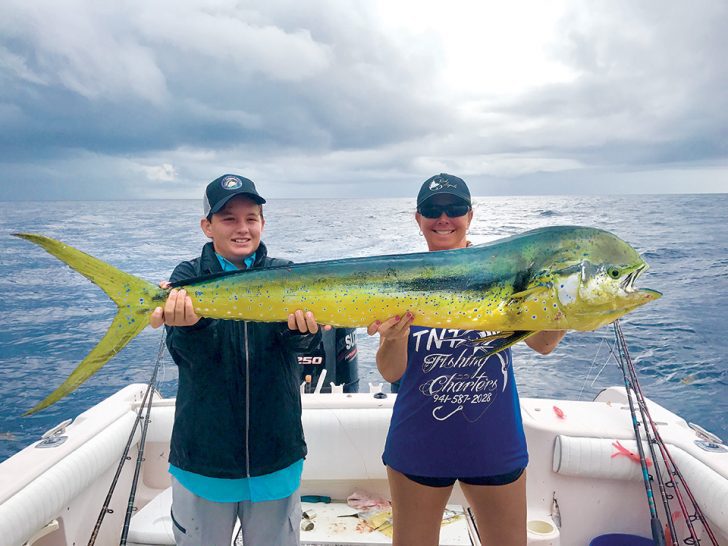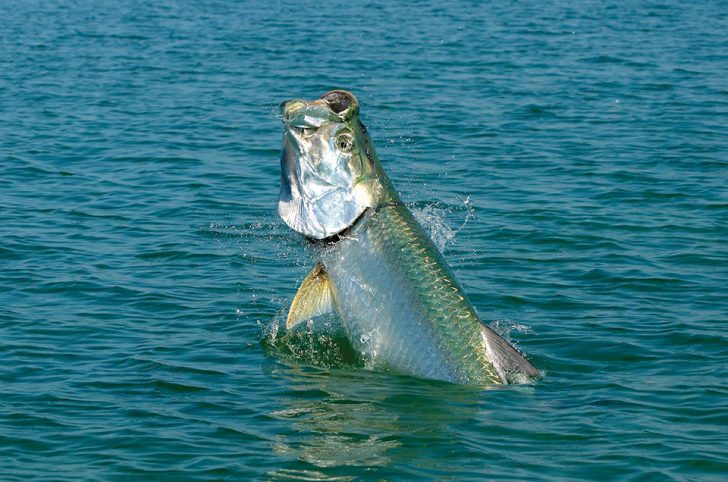It’s no secret that the Florida Keys offer some of the best fishing in the world. This 125-mile long archipelago separates the legendary backcountry fisheries of Florida Bay from the storied offshore waters of the Gulf Stream.
Unique and prolific fisheries exist here in the mixing grounds between the Gulf of Mexico and the Atlantic Ocean. Whether you’re a light-tackle or fly fishing enthusiast looking for a sight-fishing trip of a lifetime, a big-game angler seeking world-class billfish action, or a meat-hunter hungry to stock the freezer, you’ll find it off any of the islands of the Keys. And while you’re there, you’ll also find a laid-back way of life that allows you to escape the real world for while.
Backcountry: It is said that sight casting with a fly rod is a sport that originated in the backcountry of the Florida Keys. It’s easy to see why. Miles and miles of clear-water flats dotted with mangrove islands provide the perfect setting. Depending on the season, bonefish, permit and tarpon—along with a host of other exciting species like redfish and snook—cruise the sand and grass flats on the Gulf-side curve of the island chain.
Permit are the ultimate challenge for fly casters. They show up in the shallows during their pre-spawn period from late February to mid April. Weighing up to 15 or 20 pounds, they roam in schools. Their forked black tails are easy to spot in clear water, but permit are notorious for refusing flies. Even with live bait, anglers will only get one shot at these wary creatures.
Tarpon arrive on the flats about the time permit head for deeper water to spawn. On a northward migration, tarpon weighing upwards of 100 pounds look out of place in water just a few feet deep. Fishing the flats for tarpon is all about the hunt and the fight. No other species can match tarpon when it comes to size, power and willingness to take an offering in shallow water.
Bonefish like the flats when the water is warm. With a mid-summer peak, they hunt the shallows from spring into early fall. Although they don’t grow huge, bonefish are renowned for speed. At the end of a well-placed cast, a 5- or 6-pounder will bleed a lightweight reel of line in just a few seconds.
Those three species make up a flats slam in the Keys. Time it right, and you can get shots at all three in the same day while poling some of the most beautiful and expansive flats in the world.
The Reef Line: There’s a line of reefs that runs the entire length of Atlantic side of the Florida Keys. In close proximity to the Gulf Stream, this reef system is a gathering place for all kinds of sea life. From resident groupers and snappers to the big pelagic species that sweep through with the seasons, there’s always an exciting bite going on in open water.
In winter, sailfish are the main event. There are sailfish to be found year-round, but it’s during low-light conditions in winter when sailfish can be found under diving birds as they spray ballyhoo into the air. When it happens, it’s about as visual and exciting as fishing gets.
But sailfish aren’t the only game in town. Off the ocean side of the reef, wahoo, blackfin tuna, mahi-mahi, kingfish, cobia and the occasional white marlin hunt the color breaks, weed-lines and current rips. It is a target-rich environment to fly kites or troll a spread of live baits. No matter what crashes into your spread, it will be hard-pulling, tasty—or both—and with the fishery just 7 to 11 miles from the docks, it’s a short boat ride back for a fresh fish dinner.
For more information on the Florida Keys and all the islands have to offer, go to fla-keys.com.

